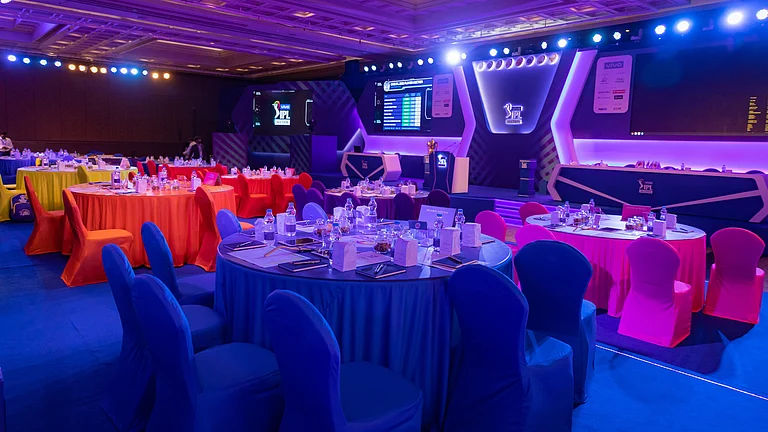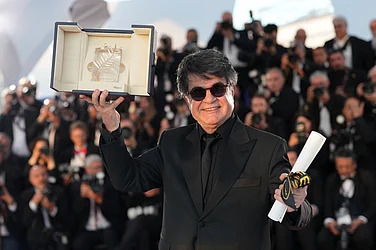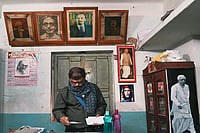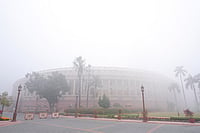It’s the second coming of private FM stations in India and newer, fresher parakeet voices are calling out to us. From the cars, in the chartered buses, in the autos and taxis and also in our homes. Names like Safiya, Gaurav, Vivek, Sameep, Pratap, Richa, Nitin and Pallavi may still not rival icons like Ameen Sayani, Melville De Mello nor even a Shamsheer Rai Luthra or Roshan Abbas. But our familiarity and intimacy with them is growing by the day. According to a TNS Mode survey, listenership has gone up 55 per cent in Delhi since the launch of private FM channels.
Radio jockeys are what Sumantra Dutta, COO, Radio Division, Star India, refers to as "the next big thing on the circuit". RJs coax us to talk about our love life and also about the state of the nation. They play our favourite rain songs, make us bid for a dinner date with Kareena Kapoor. And also helpfully advise us to avoid driving past the busy Lajpat Nagar crossing on a crowded Rakhi day. "Radio is undergoing a paradigm shift," is how Nishchint Chawla, COO of the Living Media group-promoted RED FM, says it. And the character of a radio jockey is also changing to be in tune with the station identity.
The most audible difference, perhaps, is that the motormouths are chatting a lot less. The links are getting shorter, there’s no excessive babbling. "We have to prepare what we’re going to talk. It has to make sense," says Safiya of RED FM. Attention spans are down and number of choices up, so the need to keep the listeners hooked. An important part of the training at RED, in fact, involves "talking less". "We try out whether an RJ can communicate well in 30 seconds. If he has nothing to say, can he keep quiet," says Chawla. Another factor that curbs RJ talkathons is the fact that radio is now live. "So if an RJ says ‘oh shit’, you don’t have any control on whether or not to air it," says Nandan Srinath, station head, Radio Mirchi, Delhi.
What is important in the scheme is the music. So in a 60-minute slot, as much as 48 could go just for songs. But, again, unlike yesterday, it’s not the RJs who just pick up and play their favourites. The menu is put together through a state-of-the-art software which ensures that you hear all the hit numbers. It also slots songs according to the time of day, mood and target audience. "It also ensures that songs don’t get repeated," says Srinath.
So, has machine taken over from man? Not really. "They (RJs) are the people who are flying the plane, it’s not on auto-pilot," says Srinath. Music has to come with a human touch, however brief it might be. "A consistent and crisp on-air presentation is a must," says Praveen Malhotra, station head, Radio City Delhi. And the human touch now is cool, informal, friendly—with loads of attitude. "You have to be real, be yourself," says Safiya. "It’s like talking on the phone with your best friend," explains Pallavi Rao of Radio Mirchi who came into the medium with experience in street theatre and television. Nitin of Radio Mirchi, who also moved into the medium from theatre, finds hosting a radio show like talking to his girlfriend across the mike. "It’s those small things you share with someone special," he says.
Radio, obviously, is a personal medium and RJs a part of the listener’s day-to-day life. "It may seem that you are speaking to one individual but you are in fact reaching out to about 1.5 million people at that moment," says Nitin. "It’s important to know about all the issues impacting a listener," says Richa Syal of Radio City, a trained classical singer and interior designer. "The RJ will tell you to take an umbrella if it’s raining outside," says Chawla.
What RJs are expressly told is not to put themselves on stage. "They have to be what they really are. They have to have the same personality both on and off air," says Chawla. The fusspots might find their conversations inane but the listeners seem to like the happy chatter and the bottomline, after all, is to keep them entertained. For RED it’s all about "asli masti". So even when a Sheila Dikshit is called to the studio, she’s there not to discuss politics but to tell us how she took the "univ special" to the North Delhi campus. There’s a general cheer in the air and it’s all about being young and bubbly. Obvious, because it’s aimed at school and college-goers and young executives.
And as radio inches towards becoming a truly local medium, quite like the city supplements of newspapers, RJs now are required to know their city and its ethos well. From favourite eating places to college hangouts. RJing could involve something as weird as making listeners talk about localities with funny names like Khichdipur.
Funnily, not many of the RJs want to graduate to TV. They consider radio more imaginative and challenging. "It gives us an element of mystery," says Pratap Batra of Radio City, also a trained actor. "The listeners never get to see your face and yet you hold a command over them," says Safiya. "You can paint the entire picture with your voice and keep the listeners guessing," says Pallavi. Also radio has a better shelf life than TV. "Even when I turn 60 I could do the show and still sound the same," says Safiya.
What irks, however, is that RJs now are not personalities but more like brand extensions, like the promos and the IDs of the station. They are part of the packaging of the station. A reason why most stations, unlike AIR, have RJs as full-time staffers than freelancers. Also in a bid to capture the market and raise the ad volumes, almost everyone is sounding the same. According to a Development and Research Services (drs) Pulse survey, the association of an RJ or programme with a station is not very high. Only 19.84 per cent could associate Happy Hours with Sachin with RED FM, its home channel, 34.47 per cent failed to associate it with any channel, 23.45 per cent thought it belonged to Mirchi and 22.24 per cent connected it with Radio City. Clearly, appointment listening is what radio needs to grow towards, variety needs to get more pronounced. A reason why Radio City has introduced non-music shows like Babbar Sher, Popat and Public City all aimed at a loyal listenership and to distinguish themselves from the clutter. Perhaps a Hawa Mahal or a Binaca Geet Mala might also be just round the corner.






















